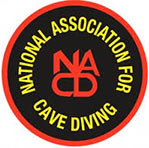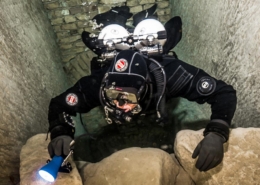TDI Equivalent Ratings with other Scuba Diving Agencies
by Jon Kieren:
A few months ago, we released an article that broke down all of the SDI Diver certifications and what the most popular agency equivalent ratings were. You can view this article HERE. The goal of posting that equivalency chart was to provide a resource for divers and dive professionals to help navigate the web of diver certifications.
This has been a popular blog post that has proven to be a valuable resource, and we have received many requests to create a similar page for TDI ratings. First impression would be that this should be fairly straight forward, however when you look a bit deeper, you will quickly see the challenges it presents.
Not all Scuba Diving Agencies are Created Equal
First and foremost, not all technical diver ratings are created equal. Every training agency takes a different approach when it comes to the flow path for creating technical divers. Throw in helium, rebreathers, cave diving, sidemount, etc. and the flow path begins to look more like a tangled complicated web of options. And that’s just for each agency; now imagine crossing back and forth from one agency to the next, and it becomes a nearly unmanageable maze. But we’re going to try to break it down for you here.
Before we get into the different ratings from different agencies, it’s important to discuss the philosophies TDI holds for all technical diver training. One of those philosophies is based on prerequisites. If you are unfamiliar with this aspect of TDI’s training flow path, please reference the article recently posted regarding prerequisites HERE. Aside from prerequisites, TDI also strongly believes that each course should be focused on one specific aspect of diving. Whether it’s a new piece of equipment (i.e. a rebreather) and environment (i.e. a cave), OR extending the diver’s range (depth, distance, decompression obligation) for that specific piece of equipment or environment. These aspects are NEVER combined into a single course.
For example, if you are not a trained decompression diver, your first rebreather course will not qualify you to conduct decompression dives using that rebreather. You will have to complete the entry level rebreather course, get some experience on the unit, then take a CCR decompression diver course (Air Diluent Decompression or Helitrox Decompression). This ensures the student is focused on developing critical equipment related skills in an environment and conditions that they are already very comfortable with. The requirements and prerequisites for each situation (depth, decompression, and overhead environments) are clearly defined in the TDI Standards and Procedures.
Not all agencies hold these same beliefs in their training programs, which effects where they fall in accordance with TDI certifications. When determining equivalencies, there are several factors that are considered:
- What does the certification qualify a diver to do (equipment, depth, decompression, gasses, and environment)?
- What has it taken to get the diver to that level of certification (prerequisites, course completion requirements)?
- What does it take to become an instructor at that level (would the instructor teaching the course meet the requirements to become a TDI instructor for an equivalent rating)?
- What does it take to become an instructor trainer at that level (would the instructor teaching the course meet the requirements to become a TDI instructor trainer for an equivalent rating)?
Based on which of these requirements are equal to the TDI rating, we may consider a diver certification equivalent. Here’s how we break it down:
Closed Circuit: Non-overhead »
Open Circuit: Cavern and Cave »
Closed Circuit: Cavern and Cave »
Compare open circuit-non overhead diver course equivalencies with this chart:
*Note – Recommendation for all TDI courses – Any new student should demonstrate skills required in previous courses to the new instructor in shallow water.
Compare closed circuit-non overhead diver certification equivalencies with this chart:
*Note – Recommendation for all TDI courses – Any new student should demonstrate skills required in previous courses to the new instructor in shallow water.
Compare open circuit-cave diver certification equivalencies with this chart:
*Note – Recommendation for all TDI courses – Any new student should demonstrate skills required in previous courses to the new instructor in shallow water.
Compare closed circuit-cave diver certification equivalencies with this chart:
*Note – Recommendation for all TDI courses – Any new student should demonstrate skills required in previous courses to the new instructor in shallow water.
If you do not see your dive training organization on this list and you are curious if it’s equivalent to an SDI, TDI, or ERDI rating, let us know! Simply write a message to the training department (training@tdisdi.com) and we will be happy to help.
Are you a professional Diver?
See our Accepted Professional Crossovers here!
Should you have any questions, feel free to ask us below.















发表评论
想加入讨论吗?请发表您宝贵的意见!